We left Cusco and are heading towards Machu Picchu. We visited the ruins at Pisac. Large hillside terreces that are still being used by the local farmers with ruins that were for the Inca King when he visited or for ceremony. The Riuns or homes for the king are very precise stones cut into perfect cubes or retangles and sanded as smooth as glass. Very beautiful. When looking down on them from a high cliff it reminded me of a my school project of building an Incan Ruin with sugar cubes in grade school. There were 6000 tombs in the nearby cliff that covered the entire hillside. Sadly they were all looted before the scientists could analyse them.
After lunch in Yucay, we traveled to the end of the valley to the town of Ollantaytambo. This is a town that still operates as an Incan village. We visited the ruins above the town which showed ruins that were still being worked on before the Spaniards came in and killed everyone. There is the long land ramp that they used when they pulled the huge rocks from one mountain top, down the valley and up this mountian. This was about 2000 foot loss of elevation down the mountain and then 2000 feet back up this mountain to its peak. The ruins on this mountian has Tiawanaco (pre-Inca) influence. So maybe the Tiawanaco people were here first and the Inca moved in afterwards. There are two styles of stone work.
Personally I think there was another culture between Tiawanaco and Inca rulers or Quechca people. I think the Quechca people moved into this area and occupied the ruins, without knowing the architurual skills. My reasons are because the Quechca people do not continue the architurual skills in stone work, and they don´t repair and use the irrigation chanels that are dormant. If they used the irrigation they would be able to plant two crops per season.
We also visited a family in town and go to see what it is like to live in a Incan ruin with a thatched roof and a fire in the corner (guinnea pigs running around on the floor). When we arrived the little girl was having her 6 year birthday party. She was in a new dress and a pinata was hanging from a cross beam. There were about 15 neighbor friends in the room waiting for a piece of cake. I took pictures of the whole scene and will send copies to the guide to pass onto the family. The parents were very proud and it reminded me alot of a birthday celebration in the states. We stayed about 10 minutes. Tommorow we will be in Machu Picchu. About noon listen for us, they say it is a very powerful place. I will say something profound.
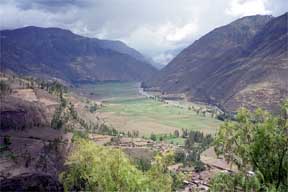
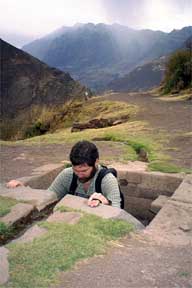
Pisac is probably the most spectacular site in the valley. You can either drive up to the site, or you can take a steep footpath that starts at the main plaza of the modern town of Pisac. When you reach the top, you'll find the ruins incorporate overlooks to deep gorges on either side. The very top is a fortress; right below that stand well-preserved temple rooms; agricultural terraces sweep down from the buildings. You may camp up here (in a tent, not in the rooms) as long as you don't light wood fires.
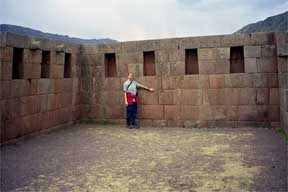
Ruins of Inca settlement at Pisac, near Cuzco
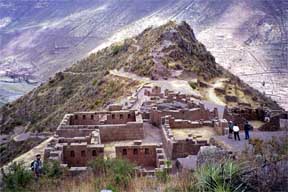
Ruins of Inca settlement at Pisac seen from above.
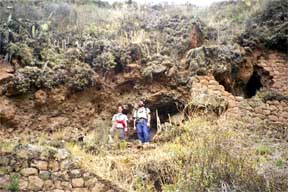
Ollantaytambo
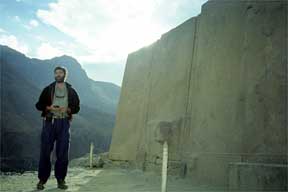
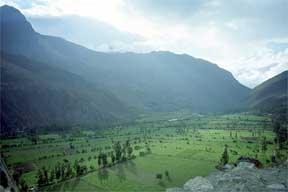
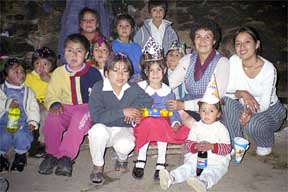
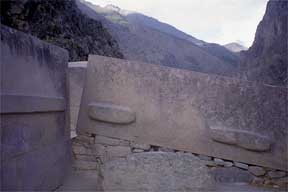
Ollantaytambo lies at the other end of the valley. Although the Incans may have thought of it primarily as a temple, Ollantaytambo was also a mighty fortress. It was the site of the only successful Incan battle against the Spanish. The site is protected by high stone terraces built from boulders hauled from 6 km away. Amazingly, rather than try to float the boulders across the river, after they hauled the boulders to the river's edge, the Incan builders diverted the river channel around them.